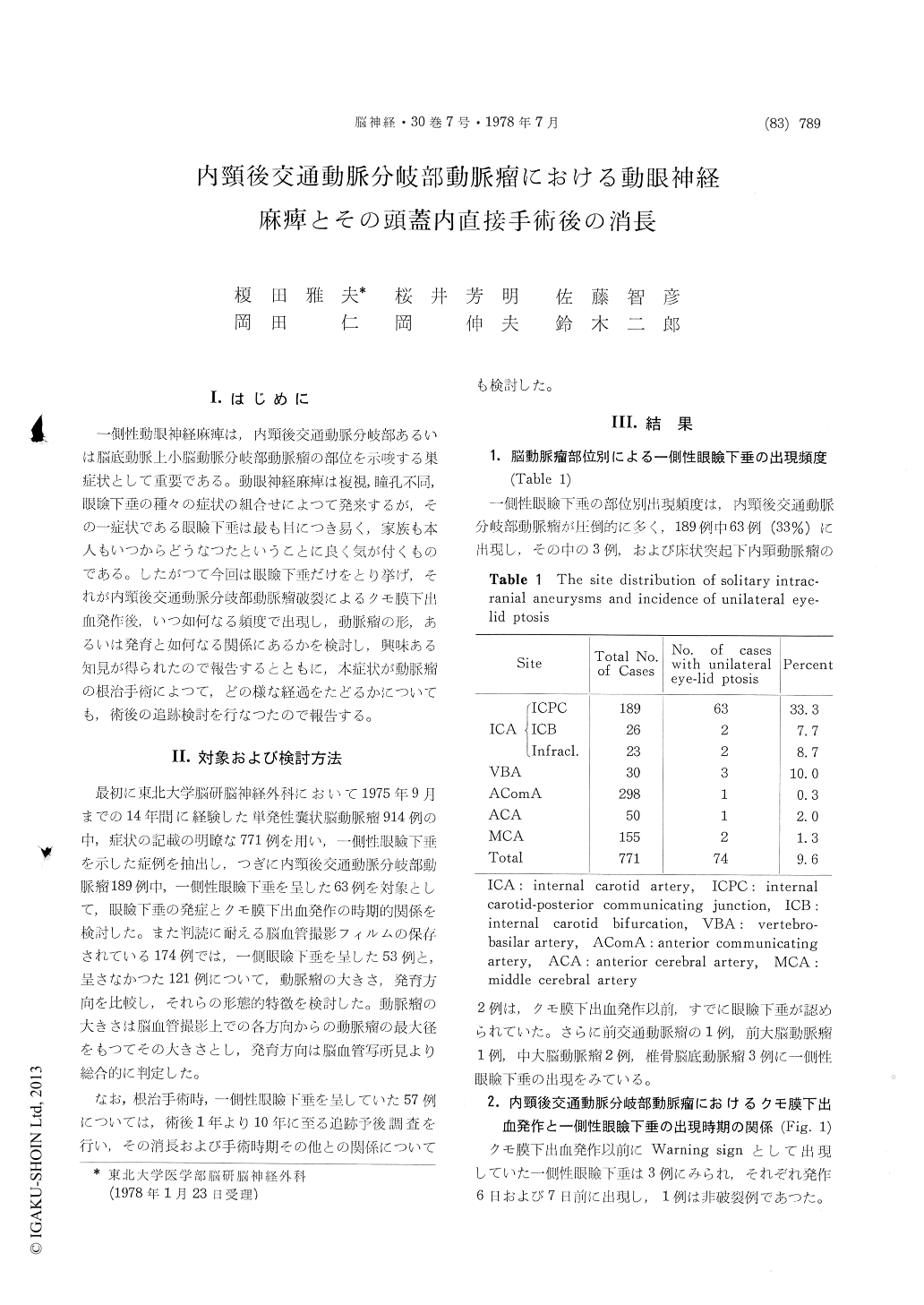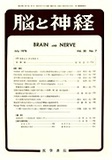Japanese
English
- 有料閲覧
- Abstract 文献概要
- 1ページ目 Look Inside
I.はじめに
一側性動眼神経麻痺は,内頸後交通動脈分岐部あるいは脳底動脈上小脳動脈分岐部動脈瘤の部位を示唆する巣症状として重要である。動眼神経麻痺は複視,瞳孔不同,眼瞼下垂の種々の症状の組合せによつて発来するが,その一症状である眼瞼下垂は最も目につき易く,家族も本人もいつからどうなつたということに良く気が付くものである。したがつて今回は眼瞼下垂だけをとり挙げ,それが内頸後交通動脈分岐部動脈瘤破裂によるクモ膜下出血発作後,いつ如何なる頻度で出現し,動脈瘤の形,あるいは発育と如何なる関係にあるかを検討し,興味ある知見が得られたので報告するとともに,本症状が動脈瘤の根治手術によつて,どの様な経過をたどるかについても,術後の追跡検討を行なつたので報告する。
Sixty-three cases of an aneurysm at the internal carotid-posterior communicating artery junction with aneurysm-induced unilateral eye-lid ptosis, a symptom of the third nerve palsy, were described.
1) The incidence of this palsy in 189 cases of the aneurysm was thirty-three percent.
2) The palsy before the aneurysm rupture was recognized in three cases (5 percent). The onsetof this palsy following an aneurysm rupture was most frequent in the first day and in almost half of the patients within two days, but in four cases the palsy appeared three or four weeks after the aneurysm rupture.
3) The size and direction of the growth of the aneurysms in carotid angiograms were compared between palsy and non-palsy groups and there were no significant differences between them.
4) Thirty-one patients who had had a palsybefore direct aneurysm surgery were followed one to ten years post-operatively. In twenty-three (74 percent), the unilateral eye-lid ptosis was recovered by the follow-up.
In eleven of the twelve cases operated within two weeks after the onset, the palsy was recovered. On the other hand, in seven of eight not-recovered cases there was a delay of more than two weeks before operation.

Copyright © 1978, Igaku-Shoin Ltd. All rights reserved.


